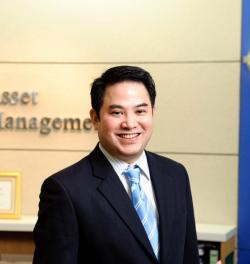Divergent monetary policy among major central banks is a key theme for investors in making decisions on asset allocations in 2016. The US Federal Reserve has started raising its policy rate for the first time in almost 10 years, and more stimulus is expected from the European Central Bank and its counterparts in Japan and China to boost their stuttering economies. Given widening differentiation among central banks, volatile trade and capital flight from emerging markets is almost a certainly.
Geopolitical tensions, China's slowdown and the lacklustre domestic economy will also pose headwinds. And while Thai equities suffered a loss in 2015, fund managers and analysts agree this asset class is likely to yield the best return in 2016 -- but only with a selective buying strategy.
Below is a sampling of views from fund managers and analysts.

Saharat Chudsuwan
Head of marketing and wealth advisory Tisco Asset Management
Although the US central bank is expected to raise rates two or three times to 1% by the end of next year, that level is not attractive enough to trigger a massive shift away from equities. Liquidity is still flooding the world's financial markets thanks to cash injections from the euro zone and Japan.
With further stimulus on the horizon, equities in euro-zone nations and Japan is Tisco Asset Management's top asset class for 2016.
"The US market's upside is limited, as their share prices factored largely in the recovering economy," Mr Saharat says.
His company also recommends investors shun most emerging markets, given that fund flows are highly volatile and several countries are running a balance-of-payment deficit with low international reserves. Putting money into India and China, however, is still suggested for long-term investment purposes.
The recent steep fall in Thai shares has made them more attractive, but risk factors linger since the economy relies on state spending as the main growth engine. The looming severe drought will be another drag on economic vitality.
Regarding asset allocation, Mr Saharat recommends investors put 60-70% of their portfolio in equities, 20-30% in bonds and money markets and any remainder in other assets. Of the equities portion, 70% should be allocated to foreign markets and 30% to Thai shares, he says.

Win Phromphaet
Chief investment officer CIMB-Principal Asset Management
The US rate rise, plunging oil prices and China's cooling economy are major threats to investment in 2016.
Given rising interest rates in the world's biggest economy, capital will flee to the US, the greenback will strengthen, and global stock markets will face higher volatility depending on the scale of the rate increase.
Oil prices remain uncertain. It will be positive for energy stocks if the crude price climbs back to US$50-60 a barrel next year. Alternatively, it will further pressure energy shares if the oil price hovers around $30-40 a barrel.
China's economic slowdown is likely to hurt Thai exports.
With the bleak outlook, investors should adopt a selective investment strategy and forgo a passive style or investment structured around benchmark indices. The "silver economy" is an investment theme for 2016, letting investors cash in on high purchasing power from greying baby boomers.
The Thai government will be pushing several infrastructure projects through the bidding process. Infrastructure-related stocks in developed economies also offer handsome dividends.
For asset allocation, 70% should go to equities (with a 50:50 ratio for local and foreign markets), 10-15% to money markets and the rest to property-related assets. Investors who have a keen eye for risk can add global equities to their portfolio.

Somjin Sornpaisarn
Chief executive TMB Asset Management
Asset diversification is recommended to mitigate risks amid the challenges of diverging monetary policy and changes in the domestic economic structure.
The global recovery is likely to gather steam gradually next year, but investment uncertainty will rise as fund flows move out of one market and into another at a brisk pace. Volatile oil prices are another lingering concern. In such an environment, investors are recommended to adopt a "core and satellite investment" concept overseen by professional fund managers.
This approach is an investment combination of active and passive investments to diversify the portfolio. The core of the portfolio consists of passive investments to track major market indices, while the satellite portion includes actively managed investments to outperform the market.
The satellite allocation should be money that is free from obligation and able to take risks, so this part should be handled by professional fund managers. Investors should allocate 40% of their portfolio to the short and medium term (two to four years) and 60% to the long term (five to seven years). Of the long-term investment portion, 60% should be in equities with an equal weighting in local and foreign stocks, 20-30% in bonds and 10-20% in real estate or infrastructure funds.
Before making their moves, investors are recommended to set aside emergency money to cover spending for six to 12 months.

Visit Ongpipattanakul
Managing director Trinity Securities
The SET index is forecast to move in the range of 1,100 to 1,500 points next year, slightly more volatile than the average range of 357 points over the past 10 years.
US rate rises, the Chinese economic slowdown and a potential devaluation of Saudi Arabia's currency are factors expected to dictate global investment.
Saudi Arabia is likely to devalue the riyal, pegged to the US dollar for 30 years, to solve fiscal problems and alleviate huge capital outflows. The stronger dollar, in this case, will hurt the oil-exporting country. If the riyal is devalued or untethered from the dollar, global oil prices may decline by $5-10 a barrel, weighing on energy shares.
Given the spate of uncertainty, investors should be conservative by reducing investment in bonds and equities, holding cash as half the portfolio and piling into fundamentally sound stocks when their share prices fall. For those who are risk-averse, 30% should be in bonds, 15% in local equities and 5% in equities abroad. Aggressive investors are recommended to put 30% into local equities, 10% into foreign stocks and 10% into bonds.
Dollar-earning operators are suggested for local equities investment, as those companies could reap a profit windfall from the stronger dollar. Companies that use raw materials are also worth a look, as they can take advantage of tumbling commodity prices.
Agricultural companies are expected to gain from rising prices driven by the El Nino phenomenon and the recovery cycle of chicken meat prices.

Sukit Udomsirikul
Managing director Maybank Kim Eng Securities (Thailand)
Investors are recommended to raise their equities weighting, with Thai shares set to be propelled by accelerated government spending and a potential reversal of capital flows. The Thai stock market is expected to be resilient to fund outflows, as foreign holdings here have been reduced for a while. The bourse's price per book, which is lower than the average of 1.88 over the past 10 years, will grab attention.
"Investors in 2016 will scoop up Thai shares when they are confident infrastructure projects remain on track, unlike this year, when they bought shares in advance," says Mr Sukit.
The Thai benchmark index is forecast to move in a range of 1,450 to 1,650 points. Construction, building materials and banking stocks are the broker's top picks. Return from equities is seen at 10-15%.

Pornthep Jubandhu
Senior vice-president for investment strategy SCB Securities
Capital outflows from emerging markets are expected to continue in the first half of next year after the Fed's rate increase, but Thai shares will be spared since foreign investors already pulled more than 120 billion baht out of the local bourse this year.
Delayed infrastructure projects will kick off in 2016 and become economic drivers, while tourism, this week's advent of the Asean Economic Community and growing urbanisation in Cambodia, Laos, Myanmar and Vietnam will also lend support.
The broker is bullish on Thai stocks and sees the SET index reaching 1,700 to 1,800 points next year. It recommends increasing the investment weighting in equities. But a rally is not expected to emerge in the first half, as global markets will still be adjusting to the Fed's rate increase.
"The market will be volatile in the first quarter," says Mr Pornthep. "Wait and see for the US rate trend and domestic megaproject bidding, then adjust portfolio investment."
Although Thai shares are expected to reverse into an upward trend, the broker still recommends selective buying of construction and building materials stocks, low-cost airlines, hotels and shares likely to reap the benefits of regional urbanisation.